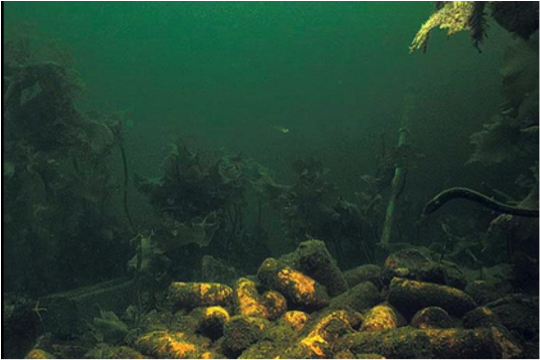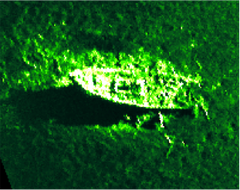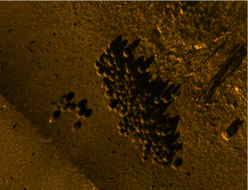Most locations of underwater chemical and conventional munitions dumped in the Baltic Sea have been identified and mapped by the previous research and CHEMSEA, MERCW or MODUM projects.
Within the pilot areas described below, DAIMON's task was to precisely locate singular munitions and inspect them by Remotely Operated Vehicles (ROVs). Objects were classified based on visual data, archive inventory and other in situ methods. Collected samples were analyzed in our partner laboratories. Health effects analyses of chemical warfare agents (CWA) and conventional munitions were done on fish and mussels.
The release of CWA and explosive degradation products were modelled to assess the area of impact, and all the above results were fed into the DAIMON decision support system.
Further DAIMON created a Catalogue of the Baltic Sea Dumped Munitions - an inventory of all munitions, both chemical and conventional resting on the bottom of the Baltic Sea and the Skagerrak, including their classification, photographic and descriptive characterization.
Within the pilot areas described below, DAIMON's task was to precisely locate singular munitions and inspect them by Remotely Operated Vehicles (ROVs). Objects were classified based on visual data, archive inventory and other in situ methods. Collected samples were analyzed in our partner laboratories. Health effects analyses of chemical warfare agents (CWA) and conventional munitions were done on fish and mussels.
The release of CWA and explosive degradation products were modelled to assess the area of impact, and all the above results were fed into the DAIMON decision support system.
Further DAIMON created a Catalogue of the Baltic Sea Dumped Munitions - an inventory of all munitions, both chemical and conventional resting on the bottom of the Baltic Sea and the Skagerrak, including their classification, photographic and descriptive characterization.
Conventional munitionsThe dumped underwater
conventional munitions (bombs, barrels, grenades, toxic candles, rockets) do not stay at their burial spot. They can move with currents and fishing nets. Alone in the German and Finish waters lay approx. 100,000 sea mines that contain large amounts of explosives like TNT read more |
WrecksSinking wrecks filled with munitions was after the 2nd World War one of the methods of dumping the unwanted warfare material. DAIMON will examine two locations known for such wrecks in the Skagerrak strait: one in the Norwegian part and one in the Swedish part around the island of Måseskär read more
|
Chemical munitions |




